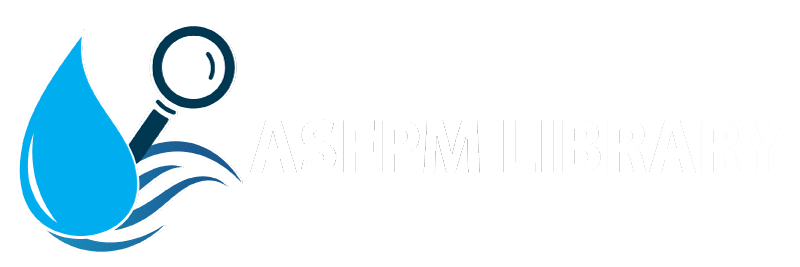Flood-Resistant Local Road Systems: A Report Based on Case Studies American Lifelines Alliance
Material type: ArticleWashington, D.C. American Lifelines Alliance 2005Description: vii, 71 pages illustrations, maps appendices B-FContent type:
ArticleWashington, D.C. American Lifelines Alliance 2005Description: vii, 71 pages illustrations, maps appendices B-FContent type: - text
- computer
- online resource
- Flood control- Case studies -- Case studies -- United States
- Flood damage prevention- Case studies -- Case studies -- United States
- Public works- Case studies -- Case studies -- United States
- roads- Flood damage- Case studies -- Case studies -- Flood damage -- United States
- Emergency management- Case studies -- Case studies -- United States
| Item type | Current library | Call number | Status | Date due | Barcode | Item holds |
|---|---|---|---|---|---|---|
 Online Resources, E-resources
Online Resources, E-resources
|
ASFPM Library | Available |
This report was written under contract between the Emergency Response and Preparedness Directorate (FEMA) of the Department of Homeland Security (DHS) and the National Institute of Building Sciences (NIBS).
This report was reviewed by a team representing practicing floodplain managers, water resources engineers, civil and structural engineers, and public works managers
Acknowledgements
The following people contributed to this report.
Oversight Committee:
Larry Larson, PE, CFM, ASFPM Executive Director, Madison, Wisconsin
Doug Plasencia, PE, CFM, AMEC Environmental, Phoenix, Arizona
Paul Osman, CFM, Illinois Flood Program Manager, Springfield, Illinois
Del Streid, Florida Public Assistance Program Manager, Tallahassee, Florida
William E. Henley, PE, Deputy Director DPW, Richmond, Virginia
Holt Hopkins, Director, Transportation Division, Anderson County, South Carolina
Mark Schoening, PE, City Engineer, City of Eugene, Oregon
Chris Yarnell, PE, Director, Public Works, Cole County, Missouri
Alan Lulloff, PE, CFM, ASFPM Project Manager, Madison, Wisconsin
Technical Contributors:
Craig E. Taylor, Ph.D., Natural Hazards Management, Inc. (Risk Analysis), Torrence, California
Jeff Sparrow, PE, CFM, AMEC Environmental (Water Resources, Debris), Chantilly, Virginia
Clancy Philipsborn, CFM, AMEC Environmental (Post-Disaster Recovery), Denver, Colorado
Mark Freeman, PE, AICP, Stantec, Inc. (Transportation Planning), Charlotte, North Carolina
Investigators:
Rebecca C. Quinn, CFM, RCQuinn Consulting, Inc., Annapolis, Maryland
Elliott Mittler, Ph.D., Consultant, Woodland Hills, California
Case Study County Representatives:
Kevin T, Beachy, PE, County Engineer, Allegany County, Maryland, Department of Public
Works
Guy R. James, Deputy Superintendent, Allegany County, New York, Department of Public
Works
Barry Webster, County Engineer, Calhoun County, Illinois, Unit Road District
Charles Wayne Everett, Road Administrator, Uvalde County, Texas, Road Department
Daniel Boldt, Director, Wasco County, Oregon, Department of Public Works
Includes bibliographic references
Executive Summary -- Introduction -- Acceptable Risk Concepts -- Project Objective -- Project Approach -- Case Study Counties -- FEMA’s Public Assistance Program -- Local Road Systems and Flood Damage -- Overview -- Roads and Drainage -- Waterway Crossings -- Case Study Departments of Public Works -- Mission, Organization and Functions -- Operating and Capital Budgets -- Regulatory Frameworks -- Decision-Making Processes for Local Road Systems -- Overview of Decision Making -- Experienced-Based Decisions -- Formal and Informal Processes -- Balancing Multiple Demands -- Decision Processes for Establishing the Annual Budgets -- Initiation of Budget Planning -- Revenue Sources and Estimation Practices -- Additional Funding for Unforeseen Flood-Related Expenses -- Decision Processes for Road and Bridge Inspections -- Scope of Inspections -- Role of Inspection in Establishing Maintenance Needs -- Inspection Frequency -- Decision Processes for Bridge and Culvert Structures -- Decision Makers -- Role of Flood Risks in Overall Bridge and Culvert Decisions -- Role of Regulations in Bridge and Culvert Decisions -- Role of Hydraulic Assessment in Bridge and Culvert Decisions -- Decisions Regarding In-Kind Replacements -- Immediate Post-Flood Response -- Long-Term Flood Recovery and Mitigation -- Overall Processes -- Post-Flood FEMA Interfacing -- Factors that Influence Decisions -- Requirements Imposed by Others -- Summary of External Requirements -- Requirements Specific to Flood Resistance -- States without Specific Flood-Related Requirements -- Influence of Environmental Regulations -- The Physical Environment -- The Influence of Flood Hazards and Experience -- Flood Hazards -- General DPW Operations -- Waterway Crossings -- Roads and Drainage -- The Influence of Budget -- The Influence of Local Knowledge and Experience -- The Influence of Staff and Equipment Capacity -- The Influence of Inspections -- The Influence of Immediate Post-Flood Recovery -- The Influence of Implicit Consideration of Costs and Benefits -- Observed Practices Related to Flood Resistance -- Improving Flood Resistance: Hydraulics -- Record Keeping: Labor, Equipment and Materials -- Periodic Inspections -- Functional Partnerships: Adjacent Communities -- Funds for Flood Recovery -- Bridge Construction Crew and Equipment -- Partnerships: State and Federal Agencies -- Watershed and Stream Morphology Approaches to Flood Problems -- Staff Development -- Findings and Recommendations -- Findings -- Recommendations -- Recommendation 1: Develop a Flood Mitigation Guidance Manual -- Recommendation 2: Develop a Guideline for Data Collection to Support Mitigation Decisions and Flood Map Modernization -- Recommendation 3: Assess Road Surface and Shoulder Durability Research -- Recommendation 4: Improve Consistency of Post-Flood Inspections -- Recommendation 5: Improve Delivery of Disaster Recovery and Mitigation
Information -- Recommendation 6: Improve Understanding of Distribution of FEMA’s Category C Expenditures -- Recommendation 7: Communities Should Formalize Local Practices Related to Flood Resistance -- Recommendation 8: Review and Revise APWA Practices Manual and Other Publications -- Recommendation 9: Capitalize on Existing Organizations Programs and Expertise -- Conclusions -- References -- Acronym List -- Key Terms -- Appendix A. FEMA’s Public Assistance Program
Local road systems are vital components of public infrastructure. ASFPM documented the decision-making factors and processes used by five communities, and identified best practices. The case studies characterized how local officials factor in pertinent regulatory requirements, as well as how they consider the full range of direct and indirect costs and direct and indirect benefits associated with the consideration of flood hazards into their decisions.



There are no comments on this title.